Tissot vs Tudor: A Luxury Watch Face-Off
In the world of luxury timepieces, Tudor and Tissot offer distinct experiences for watch enthusiasts. Tudor, with its Rolex connection, focuses on robust tool watches in the mid-luxury segment. Tissot delivers accessible luxury, blending innovation with affordability. This comparison explores their histories, designs, craftsmanship, and value propositions, guiding both collectors and newcomers in choosing between these esteemed Swiss watchmakers.
Brand Histories and Heritage: A Tale of Two Timekeepers
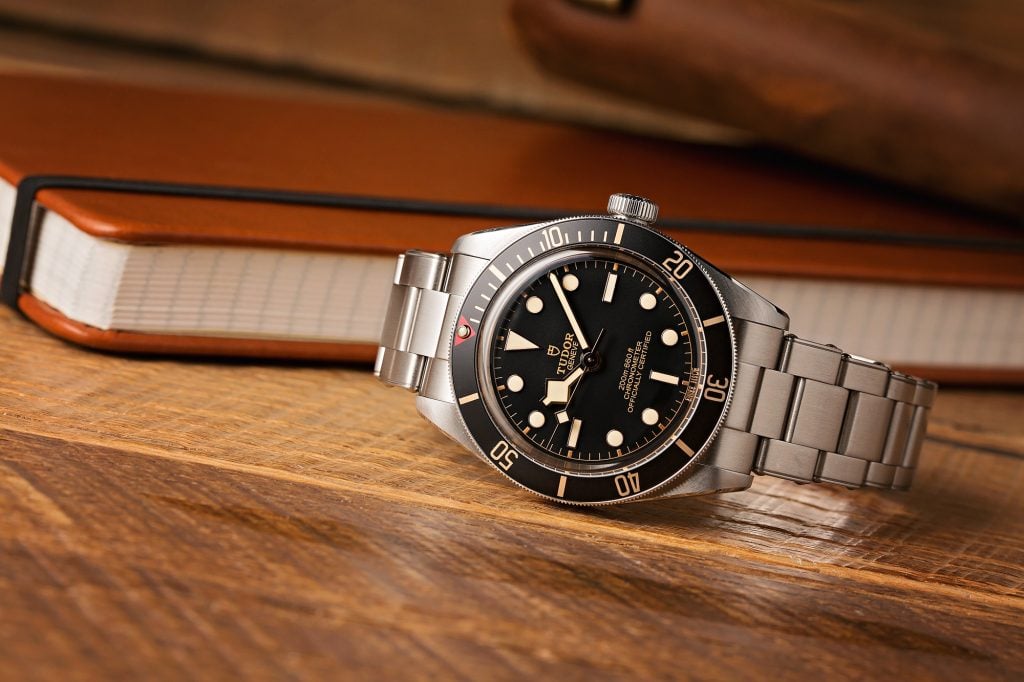
The world of luxury watches is rich with stories of innovation and tradition. In this comparison, we delve into the histories of two renowned brands: Tissot and Tudor. Both have carved unique niches in the watchmaking industry, appealing to different segments of watch enthusiasts and collectors.
Tissot's Legacy and Market Position
Founded in 1853 in the Swiss town of Le Locle, Tissot has been a pioneer in the watchmaking industry for over 160 years. The brand has consistently positioned itself as a purveyor of affordable luxury, offering a wide range of collections that cater to various tastes and needs. Tissot’s watch history is marked by significant milestones that have shaped its reputation in the horological world.
One of Tissot's most notable achievements was the creation of the first mass-produced pocket watch. This innovation democratized timekeeping, making quality watches accessible to a broader audience. In more recent years, Tissot watches have continued their tradition of innovation with the introduction of the T-Touch series, featuring tactile sapphire crystals that allow wearers to access various functions with a simple touch.
Tissot's market position is unique in that it bridges the gap between fashion watches and high-end luxury timepieces. The brand offers Swiss-made quality at price points that are attainable for many watch enthusiasts, making it a popular choice for those entering the world of luxury watches.
Tudor's Connection to Rolex and Heritage
Tudor's story begins in 1926 when Hans Wilsdorf, the founder of Rolex, established the brand as a sister company to his already successful watchmaking enterprise. Wilsdorf's vision for Tudor was to create watches that could match the reliability and dependability of Rolex, but at more modest prices. This connection to Rolex has been both a blessing and a challenge for Tudor throughout its history.
Initially positioned as a mid-tier luxury brand, Tudor watches always benefited from their association with Rolex in terms of design influence and craftsmanship standards. However, the brand has also worked hard to establish its own identity in the luxury watch market. Tudor's brand positioning has evolved over the years, now firmly established as a respected name in the mid-tier luxury segment.
Key milestones in Tudor's history include the introduction of its Heritage lines, particularly the Black Bay series, which has become synonymous with the brand's identity. These watches pay homage to Tudor's rich history of producing robust tool watches, particularly diving watches, while incorporating modern technical advancements. The brand's association with professional divers, military organizations, and adventurers has cemented its reputation for producing reliable, high-performance timepieces.
Design and Aesthetics Differences: Contrasting Styles in Horology
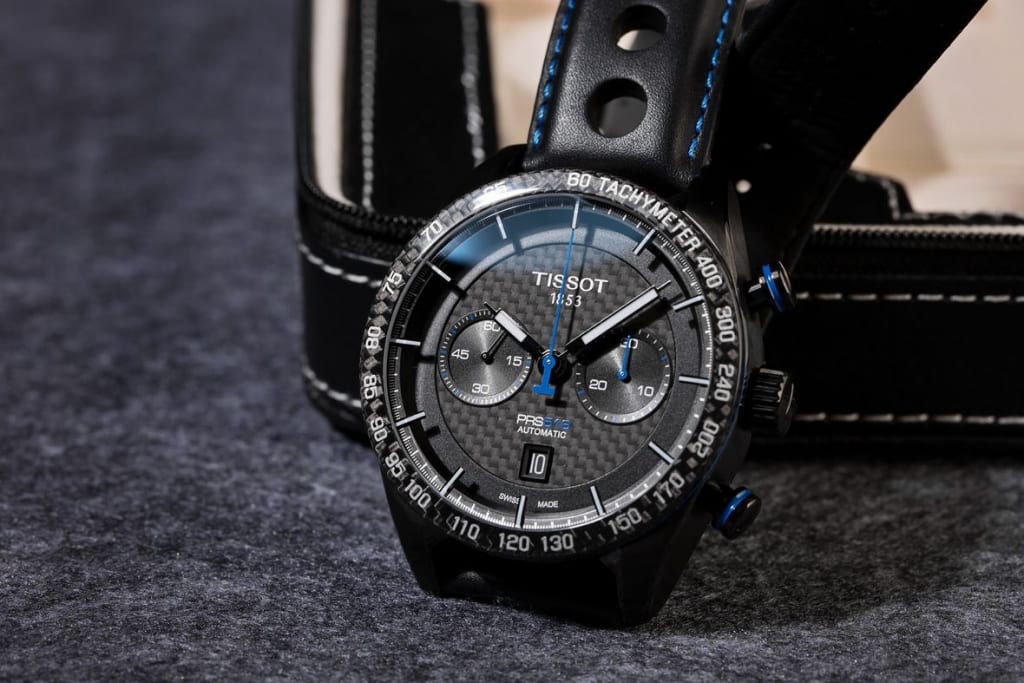
When comparing Tudor and Tissot, one of the most striking differences lies in their design philosophies and aesthetic approaches. Both brands have distinct visual identities that cater to different tastes and preferences within the luxury watch market. Let's explore the unique design languages of Tissot and Tudor, and how they manifest in their respective collections.
Tissot's Modern Versatility
Tissot's design philosophy can be described as a blend of classic elegance and modern versatility. The brand prides itself on creating watches that can seamlessly transition from casual to formal settings, appealing to a wide range of consumers. Tissot's collections showcase a diverse array of styles, from traditional dress watches to sporty chronographs.
The T-Classic line epitomizes Tissot's approach to timeless design, featuring clean dials, refined case shapes, and a focus on legibility. These watches often incorporate subtle details that nod to horological traditions while maintaining a contemporary appeal. In contrast, the Tissot T-Sport collection demonstrates the brand's ability to create robust, function-forward timepieces without sacrificing style.
One of the brand’s most innovative design elements is found in the Tissot T-Touch collection. These watches feature tactile sapphire crystals that allow wearers to access various functions by simply touching the watch face. This blend of traditional watchmaking and modern technology showcases Tissot's commitment to innovation in both form and function.
Tudor's Vintage-Inspired Tool Watches
Tudor's design philosophy is deeply rooted in its heritage as a maker of robust tool watches. The brand has successfully carved out a niche in the luxury market by offering vintage-inspired designs that combine classic aesthetics with modern manufacturing techniques. Tudor's watches often feature rugged, purposeful designs that pay homage to their utilitarian origins.
The Tudor Black Bay is perhaps the most iconic representation of the brand's design ethos. These timepieces draw inspiration from the diving watches of the 1950s and 1960s, featuring distinctive Tudor "snowflake" hands, domed sapphire crystals, and highly legible dials. The Pelagos line takes this tool watch concept even further, incorporating modern materials like titanium and ceramic to create highly capable diving instruments.
Tudor's Heritage lines demonstrate the brand's ability to reinterpret classic designs for contemporary tastes. These watches often feature subtle nods to Tudor's past, such as the "Big Crown" from early Tudor Submariner models or the distinctive case shape of the original Ranger. While Tudor's designs are influenced by its connection to Rolex, the brand has successfully developed its own visual identity, characterized by bold, purposeful aesthetics that appeal to enthusiasts of vintage-inspired watches.
Craftsmanship & Movement Quality: The Heart of Horology

The true measure of a luxury watch often lies beneath its surface, in the intricate mechanisms that power its timekeeping functions. Both Tissot and Tudor have distinct approaches to movement production and quality control, reflecting their positions in the watch market and their brand philosophies.
The Reliability of Tissot's ETA-Based Movements
Tissot, as part of the Swatch Group, primarily utilizes ETA movements in its watches. ETA, also owned by the Swatch Group, is one of the largest Swiss movement manufacturers and is known for producing reliable, high-quality movements at scale. This relationship allows Tissot to offer Swiss-made watches with dependable movements at more accessible price points.
The use of ETA movements doesn't mean a lack of innovation on Tissot's part. The brand has consistently worked to improve and customize these movements to suit their specific needs. For instance, the Powermatic 80 movement, found in many Tissot models, offers an impressive 80-hour power reserve, a significant improvement over the standard 40-hour reserve found in many automatic watches.
Tissot's focus on reliability and precision is evident in their quality control processes. While not all Tissot watches undergo COSC certification, the brand maintains strict standards for accuracy across its collections. This balance between affordability and Swiss craftsmanship is a key aspect of Tissot's value proposition in the luxury watch market.
Tudor's In-House Movements and COSC Certification
Tudor's approach to movements has evolved significantly in recent years, marking a major shift in the brand's positioning within the luxury watch market. While Tudor historically used modified ETA movements, the brand has invested heavily in developing its own in-house calibers, a move that has greatly enhanced its prestige among watch enthusiasts.
The introduction of Tudor's first in-house movement, the MT5621, in 2015 was a watershed moment for the brand. Since then, Tudor has expanded its range of in-house calibers, including the MT5612 and MT5652, which power many of their popular models like the Black Bay and Pelagos. These movements are not only designed and manufactured by Tudor but also undergo rigorous testing to achieve COSC certification, ensuring exceptional accuracy and reliability.
Tudor's in-house movements often feature advanced technical elements such as silicon balance springs, which offer improved resistance to magnetic fields and temperature variations. The brand's collaboration with movement manufacturer Kenissi (in which Tudor holds a significant stake) has further enhanced its capacity for movement innovation and production.
In terms of materials and attention to detail, Tudor often incorporates high-end features typically found in more expensive watches. For example, many Tudor models feature ceramic bezels, known for their scratch resistance and durability. The use of titanium in watches like the Pelagos demonstrates Tudor's commitment to using advanced materials to enhance the performance and wearability of their timepieces.
Pricing & Value Proposition: Luxury at Different Levels

When comparing Tudor and Tissot, one of the most significant differentiating factors is their pricing and overall value proposition. Both brands offer luxury timepieces, but they target different segments of the market, each providing unique benefits to their respective customers.
Tissot's Affordable Luxury
Tissot has long been regarded as a gateway into the world of Swiss luxury watches, offering high-quality timepieces at accessible price points. The brand's price range typically falls between $300 to $2,000, making it an attractive option for those looking to own a Swiss-made watch without breaking the bank.
Tissot's value proposition lies in its ability to deliver Swiss craftsmanship and heritage at prices that are within reach for many watch enthusiasts. The brand achieves this by leveraging its position within the Swatch Group, which allows for efficient production and access to quality components at scale. Despite the lower price point, Tissot doesn't compromise on quality, using materials like sapphire crystals and reliable ETA movements in many of its watches.
Some of Tissot's best value models include the Tissot Gentleman, which offers an elegant everyday watch with an 80-hour power reserve at a very competitive price point. The Tissot PRX, with its integrated bracelet design, provides a luxurious look and feel reminiscent of much more expensive watches. For those interested in dive watches, the Tissot Seastar 1000 offers impressive water resistance and build quality at a fraction of the cost of many luxury dive watches.
Tudor's High-End Craftsmanship for Mid-Tier Prices
Tudor positions itself in the mid-tier luxury segment, with prices generally ranging from $2,500 to $6,000. While more expensive than Tissot, Tudor offers outstanding craftsmanship and a brand prestige that bridges the gap between mainstream luxury watches and ultra-high-end timepieces.
The value proposition of Tudor lies in its ability to deliver watches with high-end features, in-house movements, and a connection to the prestigious Rolex brand, all at prices significantly lower than its parent company. Tudor achieves this by focusing on robust, tool-watch designs and leveraging some shared technology with Rolex, while maintaining its own distinct identity.
Tudor's best value models often come from its popular collections. The Tudor Black Bay 58, for instance, offers a superbly crafted dive watch with vintage-inspired aesthetics and an in-house movement at a price point that's highly competitive within its class. The Pelagos FXD, developed in collaboration with the French Navy, showcases Tudor's expertise in creating professional-grade dive watches. For those seeking a more understated option, the Tudor Ranger provides a rugged, exploration-themed watch at an entry-level price point for the brand.
Market Perception & Brand Prestige: Reputation in the Watch World
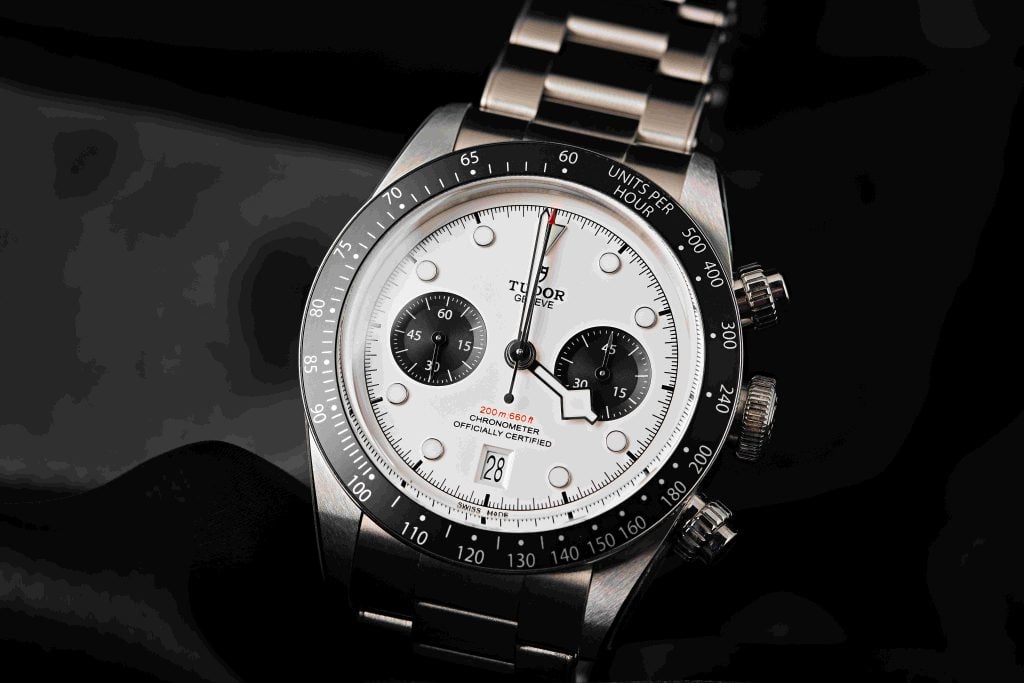
The way a watch brand is perceived in the market plays a crucial role in its success and appeal to consumers. Tissot and Tudor, while both respected names in the watch industry, occupy different positions in terms of market perception and brand prestige.
Tissot's Popularity and Accessibility
Tissot has cultivated a reputation for accessibility, quality, and innovation in the watch market. The brand is widely recognized for offering Swiss-made timepieces at price points that are attainable for a broad range of consumers. This positioning has made Tissot a popular choice for first-time luxury watch buyers and those seeking value-driven luxury.
One of Tissot's strongest assets is its association with various sports partnerships. The brand has long-standing relationships with major sporting events and organizations, including the NBA, MotoGP, and cycling's Grand Tours. These partnerships not only enhance Tissot's visibility but also reinforce its image as a maker of precise, reliable timepieces capable of performing in demanding environments.
Tissot's diverse range of collections, from classic dress watches to innovative touchscreen timepieces, appeals to a wide audience. The brand is often seen as a stepping stone into the world of Swiss luxury watches, offering consumers a taste of horological craftsmanship without the hefty price tag of more prestigious brands.
Tudor's Prestige and Heritage Link to Rolex
Tudor's market perception has evolved significantly over the past decade, with the brand successfully establishing itself as a highly respected name in the mid-tier luxury watch segment. While Tudor has always benefited from its association with Rolex, it has worked hard to carve out its own distinct identity and following.
The brand is increasingly seen as a high-quality alternative to Rolex, offering similar levels of craftsmanship and attention to detail, but at more accessible price points. Tudor's focus on robust tool watches and vintage-inspired designs has resonated strongly with watch enthusiasts and collectors, who appreciate the brand's commitment to both form and function.
Tudor's growing reputation is particularly evident in the enthusiast community, where models like the Black Bay and Pelagos have achieved cult status. The brand's decision to develop in-house movements has further enhanced its prestige, placing it on par with many higher-priced luxury watch brands.
The heritage link to Rolex continues to be a double-edged sword for Tudor. While it lends the brand an air of prestige and reliability, Tudor has had to work hard to step out of Rolex's shadow and establish its own unique identity. The success of collections like the Black Bay and the revival of Tudor's shield logo have gone a long way in achieving this goal.
Target Audience & Use Cases: Who Wears What and Why

Understanding the target audience and typical use cases for Tissot and Tudor watches provides valuable insight into each brand's positioning and appeal. While both brands cater to watch enthusiasts, they often attract different types of consumers with varying needs and preferences.
Who Buys Tissot Watches?
Tissot's target audience is quite diverse, reflecting the brand's wide range of offerings and accessible price points. The brand particularly appeals to first-time luxury watch buyers who are looking to enter the world of Swiss timepieces without making a significant financial commitment. These consumers often appreciate the combination of Swiss heritage and modern design that Tissot offers.
Casual watch wearers form another significant segment of Tissot's customer base. These are individuals who appreciate a well-made timepiece for daily wear but may not be deeply invested in watch collecting or horology. Tissot's blend of style and functionality appeals to this group, offering watches that can transition seamlessly from casual to more formal settings.
Sports enthusiasts are also drawn to Tissot, thanks to the brand's strong associations with various sporting events and its range of sports-oriented watches. The T-Touch collection, with its innovative touch-screen functionality, is particularly popular among outdoor enthusiasts and those who engage in various athletic activities.
In terms of use cases, Tissot watches are versatile enough to suit a wide range of occasions. Many models are designed for everyday wear, balancing style with practicality. The brand's dress watches are suitable for formal events, while its sports watches cater to more active lifestyles. The T-Touch series, with its multiple functions, is often chosen for outdoor activities and travel.
Who Buys Tudor Watches?
Tudor's target audience tends to be more focused on the enthusiast and collector segments of the watch market. The brand attracts individuals who have a deeper appreciation for watchmaking and are willing to invest more in a timepiece. Many Tudor buyers are watch collectors who appreciate the brand's heritage, connection to Rolex, and recent innovations in in-house movements.
Tool watch enthusiasts form a significant portion of Tudor's customer base. These are individuals who appreciate robust, purpose-built timepieces with a focus on functionality. Tudor's diving watches, like the Pelagos and Black Bay series, are particularly popular among this group, appealing to both professional divers and those who admire the aesthetic and engineering of dive watches.
Tudor also attracts consumers who are drawn to vintage-inspired designs. The brand's Heritage lines, which reinterpret classic Tudor models with modern manufacturing techniques, appeal to those who appreciate retro aesthetics combined with contemporary reliability.
In terms of use cases, Tudor watches are often chosen for their versatility and durability. Many models are designed to be worn in demanding environments, making them suitable for diving, exploration, and other adventure activities. At the same time, the classic styling of many Tudor watches allows them to be worn in more formal settings as well.
The Black Bay series, for instance, is equally at home underwater as it is peeking out from under a shirt cuff in a business meeting. The Pelagos, with its titanium case and advanced features, is often chosen by serious divers and those who require a highly functional timepiece. Meanwhile, models from the Heritage line are favored for their ability to add a touch of vintage charm to both casual and semi-formal attire.
Key Model Comparisons: Head-to-Head Matchups

To provide a more concrete understanding of how Tissot and Tudor stack up against each other, let's compare some of their key models across different categories. These comparisons will highlight the unique strengths and characteristics of each brand in various segments of the watch market.
Tissot PRX vs. Tudor Black Bay 58
The Tissot PRX and Tudor Black Bay 58 represent two distinct approaches to creating a versatile, everyday watch with vintage inspiration. The PRX, with its integrated bracelet design, channels the spirit of 1970s sports watches, while the Black Bay 58 draws from Tudor's diving watch heritage of the late 1950s.
In terms of design aesthetics, the PRX offers a sleek, contemporary look with its angular case and bracelet integration. The Black Bay 58, on the other hand, features a more traditional dive watch design with its prominent bezel and domed crystal. Both watches exude vintage charm, but the PRX leans more towards a dressy-sporty style, while the Black Bay 58 maintains a rugged tool watch appearance.
Movement quality is where these watches significantly differ. The Tissot PRX is available with either a quartz movement or the automatic Powermatic 80, offering reliability and a impressive 80-hour power reserve. The Tudor Black Bay 58, however, boasts an in-house COSC-certified movement, reflecting Tudor's higher position in the luxury market.
Price points for these models vary considerably. The Tissot PRX is significantly more affordable, making it accessible to a wider range of consumers. The Tudor Black Bay 58, while pricier, offers the prestige of the Tudor brand and the technical sophistication of an in-house movement.
The target audience for each watch also differs. The PRX appeals to those seeking a stylish, versatile watch with Swiss pedigree at an accessible price point. The Black Bay 58 attracts watch enthusiasts and collectors who appreciate its diving heritage, technical features, and the Tudor brand's connection to Rolex.
Tissot Seastar vs. Tudor Pelagos
In the realm of diving watches, the Tissot Seastar and Tudor Pelagos represent their respective brands' approaches to creating professional-grade underwater timepieces. Both watches are designed with serious divers in mind, but they cater to different segments of the market.
The Tissot Seastar offers impressive diving capabilities, with water resistance typically ranging from 300m to 600m depending on the specific model. It features a unidirectional rotating bezel, luminous markers, and a helium escape valve on some models. The Tudor Pelagos, however, takes these features to the next level with 500m water resistance, a titanium case and bracelet, and an automatic helium escape valve.
In terms of materials and overall durability, the Pelagos has a clear edge. Its titanium construction makes it incredibly light and corrosion-resistant, ideal for prolonged exposure to saltwater. The Seastar, while robust, typically uses stainless steel, which is heavier but also more affordable.
Movement-wise, the Seastar usually houses ETA-based movements, which are reliable and easily serviceable. The Pelagos, in line with Tudor's recent direction, features an in-house movement with COSC certification, offering superior accuracy and a point of pride for watch enthusiasts.
For professional diving, the Tudor Pelagos is the more capable watch, with its advanced features and materials justifying its higher price point. However, the Tissot Seastar offers excellent value for recreational divers and those who appreciate the aesthetics of a dive watch without requiring extreme depth ratings.
Tissot T-Classic vs. Tudor Heritage
In the dress watch segment, the Tissot T-Classic line and Tudor Heritage collection offer different interpretations of timeless elegance. The T-Classic series encompasses a wide range of classic watch designs, from minimalist time-only pieces to more complicated models. Tudor's Heritage line, while not exclusively dress watches, includes models that can easily transition from casual to formal settings.
Aesthetically, Tissot T-Classic watches tend to be more conservative and traditionally styled, adhering closely to classical watch design principles. Tudor Heritage pieces, such as the Heritage Advisor or Black Bay 36, often incorporate vintage-inspired elements with a modern twist, resulting in a more distinctive appearance.
Movement technology varies significantly between these collections. Tissot T-Classic watches typically feature ETA or ETA-derived movements, offering reliable timekeeping at a more accessible price point. Tudor Heritage models are equipped with in-house movements, reflecting Tudor's commitment to horological excellence and justifying their higher price tags.
In terms of pricing, the Tissot T-Classic line offers exceptional value in the dress watch segment. These watches provide Swiss-made quality and classic styling at prices that are attainable for many watch enthusiasts. Tudor Heritage pieces, while more expensive, offer a higher level of prestige, more sophisticated movements, and the cachet of the Tudor brand.
The choice between a Tissot T-Classic and a Tudor Heritage model often comes down to the buyer's budget and specific needs. Those seeking a classic, well-made dress watch at an affordable price will find great options in the T-Classic line. Watch enthusiasts looking for a more prestigious brand, in-house movements, and unique vintage-inspired designs may prefer the Tudor Heritage collection, despite the higher investment required.
Durability, Water Resistance, & Everyday Usability: Performance Beyond Aesthetics
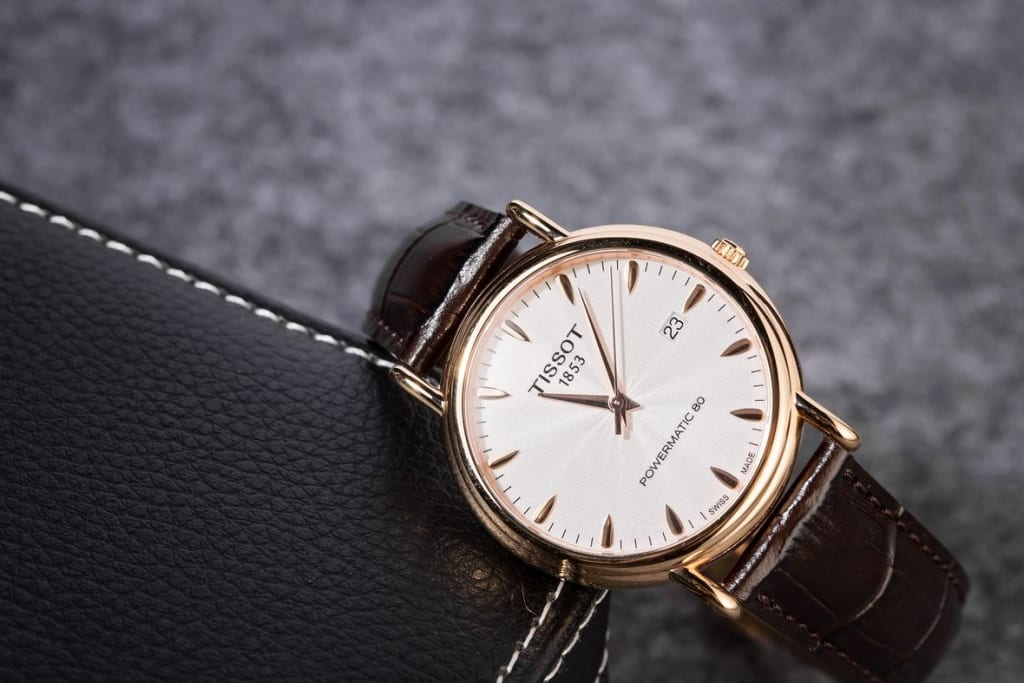
When investing in a luxury watch, considerations of durability, water resistance, and everyday usability are crucial. Both Tissot and Tudor have reputations for creating reliable timepieces, but they approach these aspects in different ways, reflecting their brand philosophies and target markets.
Tissot's Balance of Durability and Style
Tissot has built its reputation on creating watches that offer a balance between durability and style, suitable for everyday wear across various lifestyles. The brand's approach to water resistance varies across its collections, catering to different user needs.
In the T-Sport collection, particularly with models like the Seastar, Tissot demonstrates its capability in creating highly water-resistant timepieces. The Seastar offers water resistance ratings up to 300m or even 600m in some models, making it suitable for serious diving activities. This level of water resistance is impressive, especially considering Tissot's price point in the luxury watch market.
For everyday wear, many Tissot watches in the T-Classic and other collections typically offer water resistance between 30m to 100m. While not suitable for diving, these ratings provide adequate protection against splashes and rain, ensuring the watch can withstand the rigors of daily life.
Tissot's use of materials like sapphire crystals, even in their more affordable models, speaks to their commitment to durability. These scratch-resistant crystals help maintain the watch's appearance over time, contributing to its longevity. Additionally, Tissot's incorporation of robust movements, like the Powermatic 80, ensures reliable timekeeping in various conditions.
Tudor's Toughness for Extreme Conditions
Tudor has long been associated with robust tool watches designed to withstand extreme conditions. This reputation is particularly evident in their dive watch collections, which showcase Tudor's commitment to durability and high performance.
The Tudor Pelagos stands out as an exemplar of the brand's approach to water resistance and durability. With a water resistance rating of 500m, it goes beyond the needs of most recreational divers and is suitable for professional use. The Pelagos also features a helium escape valve, allowing it to be used in saturation diving.
Tudor's use of materials further underscores its focus on durability. The brand frequently incorporates high-tech materials like titanium and ceramic in its watches. The Pelagos, for instance, features a full titanium case and bracelet, offering exceptional corrosion resistance and a lightweight feel despite its substantial size. Ceramic bezels, found on many Tudor models, provide excellent scratch resistance, ensuring the watch maintains its appearance even under heavy use.
Even Tudor's non-dive watches, like those in the Black Bay line, often feature impressive water resistance ratings of 200m or more. This level of water resistance makes these watches suitable for swimming and snorkeling, providing peace of mind for everyday wear.
Tudor's in-house movements are designed with robustness in mind. Features like silicon balance springs offer improved resistance to magnetic fields and temperature variations, enhancing the watch's reliability in various environments.
In terms of everyday usability, both Tissot and Tudor excel in creating watches that can withstand the rigors of daily wear. Tissot offers a wide range of styles suitable for different occasions, from boardroom meetings to weekend adventures. Tudor's watches, while often sportier in design, are versatile enough to transition between casual and more formal settings, especially models like the Black Bay 36 or the Heritage line.
Tissot vs Tudor: Which Brand is Right for You?
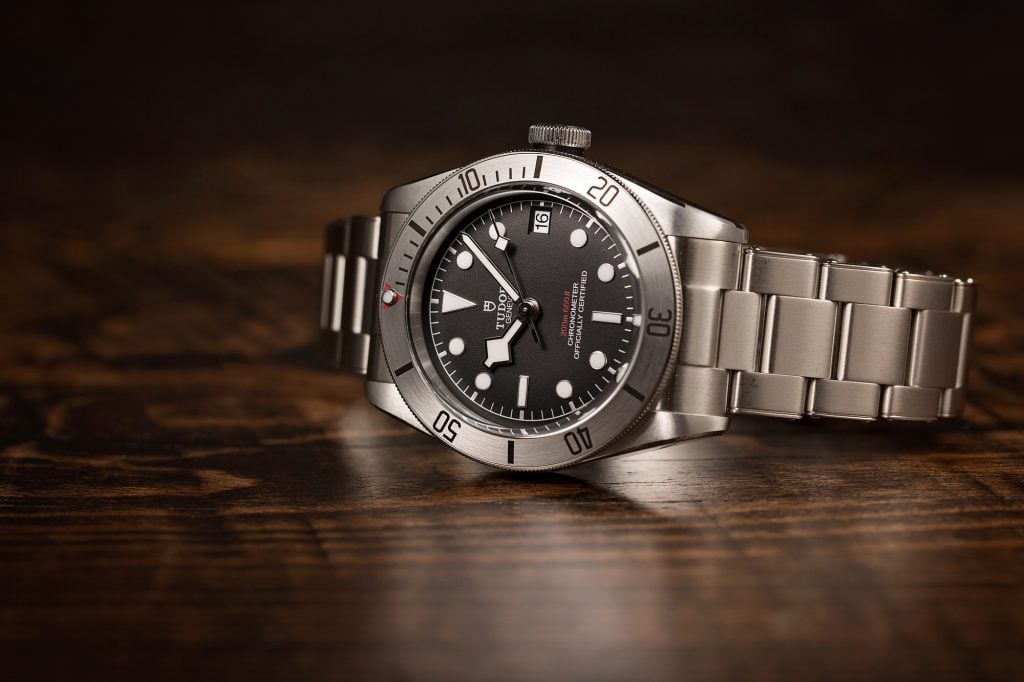
As we conclude our comparison of Tissot and Tudor, it's clear both brands offer compelling options for watch enthusiasts, catering to different segments of the luxury market. Your choice will depend on your preferences, budget, and needs as a watch wearer.
Tissot excels in offering Swiss luxury at accessible price points. Its strengths lie in versatility, innovation, and value. Our Tissot watch review offers more detailed information about the brand and its collections, highlighting its impressive price-to-quality ratio and blend of traditional craftsmanship with modern technology. From the sporty PRX to the classic T-Classic line, Tissot suits various tastes and occasions.
Tudor, on the other hand, appeals to those seeking a higher echelon of luxury watchmaking, with a particular emphasis on robust tool watches and vintage-inspired designs. The brand's heritage, connection to Rolex, and recent innovations in in-house movements make it attractive to serious watch enthusiasts and collectors. If you value the prestige of a luxury brand, appreciate fine craftsmanship, and are willing to invest more in your timepiece, Tudor offers exceptional quality, especially in their dive watch and heritage collections.
Our Tudor watch review, besides the detailed information about the brand and its collections, praises the brand's ability to offer Rolex-like quality at a more attainable price point, along with its successful revival of vintage-inspired designs.
Both brands have their unique selling points. Tissot excels in providing affordable luxury with a touch of innovation, as seen in their T-Touch collection. Tudor shines in creating tough, reliable watches with a strong connection to horological history, exemplified by their Black Bay and Pelagos lines. Your decision may also be influenced by factors such as brand perception, with Tudor generally carrying more prestige in watch collecting circles.
Ultimately, the choice between Tissot and Tudor is not just about choosing a watch, but about aligning with a brand philosophy and heritage that resonates with you. Whether you opt for the accessible Swiss luxury of Tissot or the robust, heritage-rich offerings of Tudor, you're investing in a piece of horological craftsmanship.
At Bob's Watches, we understand the nuances of these brands and the passion that drives watch enthusiasts. While we specialize in luxury pre-owned watches, particularly Rolex, our expertise extends to a wide range of prestigious brands, including Tudor. We encourage you to explore both Tissot and Tudor, considering how each brand's unique qualities align with your personal style, needs, and aspirations as a watch owner. Remember, the perfect watch is one that not only tells time but also tells your story.
With over two decades of experience in the luxury watch industry, the Bob's Watches Editorial Team stands at the forefront of watch expertise and insight. Our team, composed of seasoned watch enthusiasts, skilled horologists, and knowledgeable industry insiders, is dedicated to bringing you the latest and most accurate information in the world of luxury timepieces. We pride ourselves on our meticulous attention to detail and our unwavering commitment to authenticity. Our editorial content is a reflection of our passion for luxury watches and our dedication to providing our readers with comprehensive, unbiased, and up-to-date information. Our expertise spans a wide range of topics, including in-depth reviews of the latest models, historical retrospectives of iconic timepieces, and insightful analyses of market trends. We are also renowned for our detailed guides on watch maintenance and investment advice, making us a trusted resource for both seasoned collectors and new enthusiasts alike. As thought leaders in the watch industry, we understand the importance of staying ahead of the curve. That's why we continually update our knowledge and skills, ensuring that our readers receive the most current and relevant information. Whether you're seeking advice on your next luxury watch purchase or looking to deepen your understanding of watch craftsmanship, the Bob's Watches Editorial Team is here to guide you.